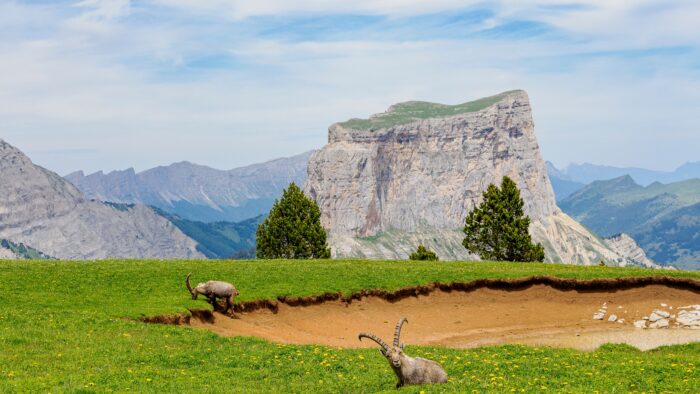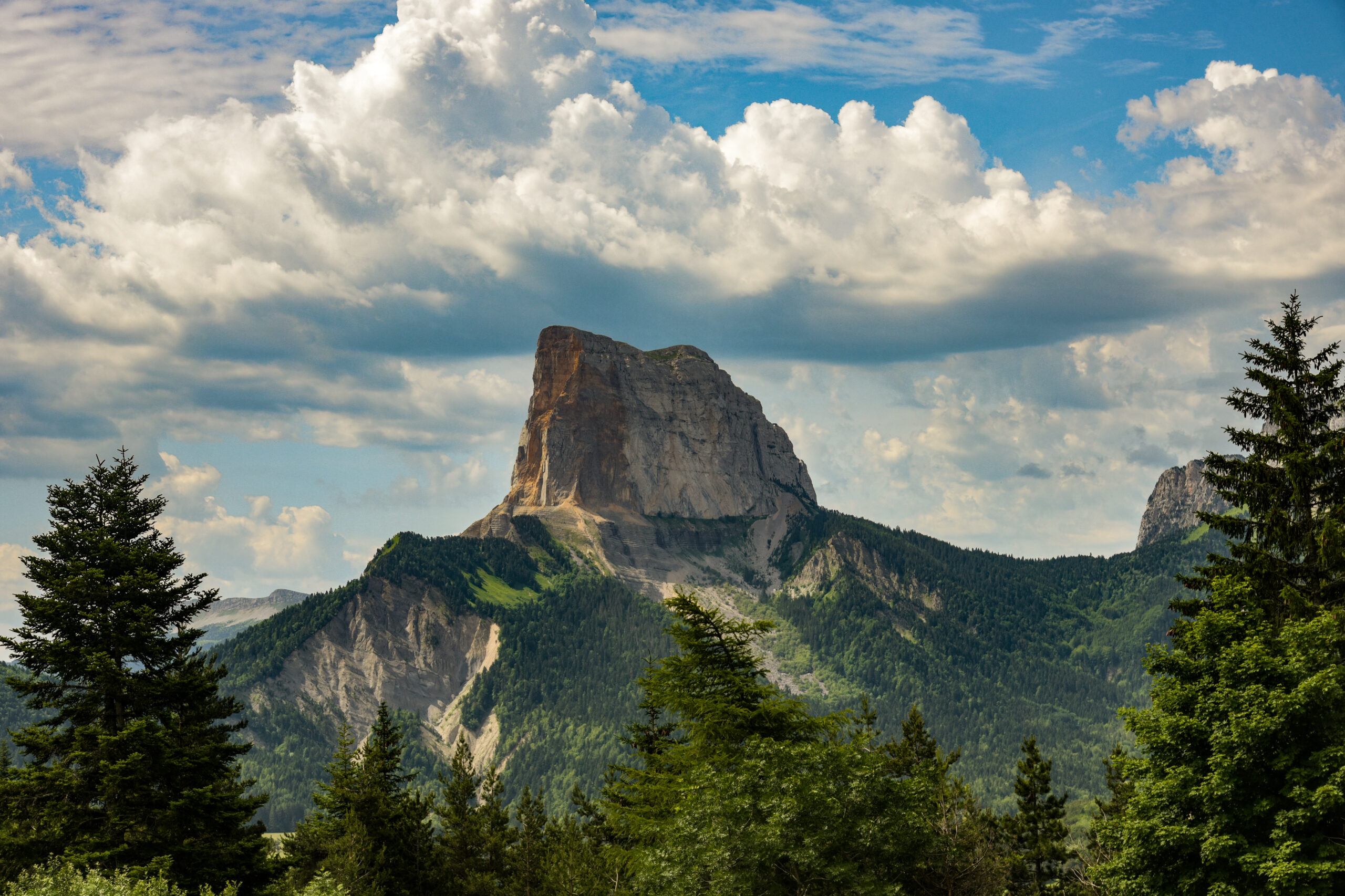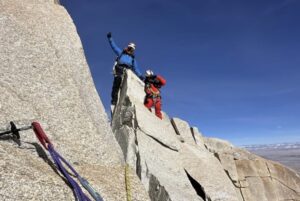If people rock climbed before 1492, the evidence is conjectural.
Villagers inhabited the Sky Caves of Nepal, carved into stone hundreds of meters off the ground, as early as the seventh century BC. Asked how the ancients got up there, locals are known to quip, “The lamas fly.”
Similar sites exist in the western United States, where thousand-year-old groups like the Mogollon left faint traces of climbing to cliff dwellings and cultural depots such as Hueco Tanks.
But no documented record of a climb existed anywhere in the world until 1492. That year — which coincidentally was also the year that Columbus set sail — King Charles VIII decided to force one of his military engineers to climb Mont Aiguille — a 400m limestone mesa some called Mount Inaccessible. On its flat top, angels allegedly cavorted.
The engineer’s name was Antoine de Ville. He and 10 other intrepid souls started up the northwest face armed with wooden ladders.
By all accounts, de Ville and his team did reach the 2,087m summit. After their unlikely flurry up hundreds of meters’ worth of ladders, nobody else repeated it for centuries.
Most advanced ever
De Ville’s first ascent was the most advanced known rock climb relative to the rest of its era. Former American Alpine Journal editor J. Monroe Thorington’s 1965 report had this to say about the Mont Aiguille route: “The ascent was said to be ‘half a league by ladders, and a league by a route terrifying to see and even more so to descend.’ Only a few years after the event, Antoine de Ville was spoken of as an ‘alchimiste,’ a sorcerer!”
According to Thorington’s research, ground witnesses sourced from French authorities corroborated that de Ville had actually summited Mont Aiguille.
De Ville simply called the ascent “le plus horrible” — “the worst.” Details on the campaign itself are scarce. But all 11 members, including multiple religious officials and a “ladder-man to the king,” seem to have topped out on Mont Aiguille.
Quick repeaters scurry up ladders
De Ville and his crew first spent a few days on the summit meadow building a mountain hut — no details on how they carried the lumber up those ladders. They also erected a few crosses in the name of Charles VIII and wrote fantasy reports about unusual flora and fauna, and some mysterious human footprints.
The note about footprints turned out to be prescient, Thorington reported. Two more groups of local nobles and bureaucrats soon followed de Ville’s ladders to the top.
“Imagine their astonishment,” he wrote, when conspicuous people such as a viscount popped up onto the mesa.

Photo: Shutterstock
Ladders, sorcery, or otherwise, it’s beyond argument that de Ville was ahead of his time. Later climbers retrofitted his route with fixed safety gear, including iron chains. American climber and historian W.A.B. Coolidge repeated it in 1881. His account, per Thorington:
“The way (center of NW face) lies through several deeply cut fissures, or rather, hollows of the most extraordinary nature. At one moment, we seemed to be in the very bowels of the mountain in a great cavern, whither scarcely any light penetrated. The rock is very smooth and bad to climb, so I was glad to avail myself of the iron chains.”
Today, climbing beta website The Crag calls de Ville’s route the Voie Normal and rates it at a gentle 4a (5.4).
Maybe controversially, the site credits the first ascent to Jean Liotard in 1834 — the man who allegedly arrived second, 342 years after de Ville.
Of course, most believe that de Ville genuinely summited the peak. A few have even tried to re-enact the legendary ladder ascent for a documentary project. It continues to be an intriguing objective for the historically minded.
Tomorrow’s objective: Mont Aiguille- The oldest documented rock climb in the world 1st done in 1400… pic.twitter.com/4bySgInEbp
— Mark Seaton (@guidemark) July 2, 2024






